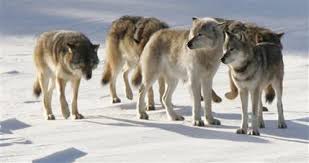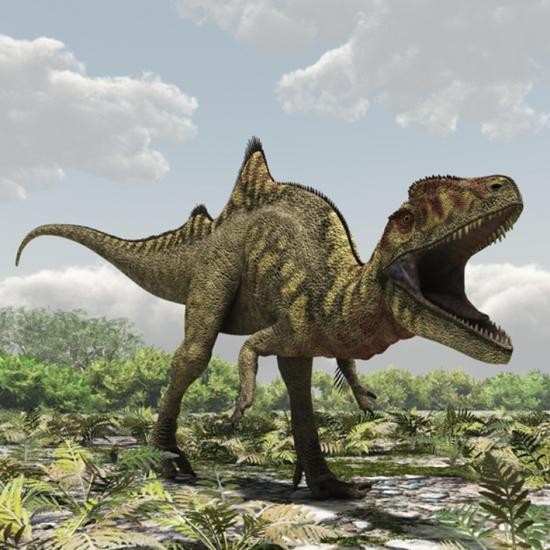Post by dinosauria101 on Feb 20, 2019 9:55:51 GMT 5
Grey Wolf (pack of 6) - Canis lupus
The Grey Wolf (Canis lupus) is the largest wild canid, males averaging between 70 and 110 pounds depending on subspecies. The Wolf has a specialized body that has made it one of the world's most efficient hunters. Its powerful neck is a very important adaptation: it has to be strong to support the wolf's large head and is crucial for bringing down prey. The skull is 31cm (12 inches) long and is armed with an impressive array of large canines and carnassial teeth which, when coupled with huge jaw muscles that are evident from the large sagittal crest and wide zygomatic arches, give it an incredible biteforce that is strong enough to break the bones of prey and even crack the femur of moose. Wolves primarily feed on medium to large sized ungulates (up to the size of bison 10–15 times larger than themselves), though they are not fussy eaters. Medium and small sized animals that may supplement the diet of wolves include marmots, beaver, hares, badgers, foxes, weasels, ground squirrels, mice, hamsters, voles and other rodents, as well as insectivores.

Concavenator corcovatus
Concavenator is a genus of theropod dinosaur that lived approximately 130 million years ago during the early Cretaceous period (Barremian stage). The type species is C. corcovatus; Concavenator corcovatus means "hump backed hunter from Cuenca". The fossil was discovered in the Las Hoyas fossil site of Spain by paleontologists José Luis Sanz, Francisco Ortega and Fernando Escaso from the Autonomous University of Madrid and the National University of Distance Learning. Concavenator was a medium-sized (roughly 6 meters (20 feet) long, and 500 kg (1,100 lbs) primitive carcharodontosaurian dinosaur possessing several unique features. Two extremely tall vertebrae in front of the hips formed a tall but narrow and pointed crest (possibly supporting a hump) on the dinosaur's back. The function of such crests is currently unknown. Paleontologist Roger Benson from Cambridge University speculated that one possibility is that "it is analogous to head-crests used in visual displays", but the Spanish scientists who discovered it noted it could also be a thermal regulator.

Credit to Wikipedia
The Grey Wolf (Canis lupus) is the largest wild canid, males averaging between 70 and 110 pounds depending on subspecies. The Wolf has a specialized body that has made it one of the world's most efficient hunters. Its powerful neck is a very important adaptation: it has to be strong to support the wolf's large head and is crucial for bringing down prey. The skull is 31cm (12 inches) long and is armed with an impressive array of large canines and carnassial teeth which, when coupled with huge jaw muscles that are evident from the large sagittal crest and wide zygomatic arches, give it an incredible biteforce that is strong enough to break the bones of prey and even crack the femur of moose. Wolves primarily feed on medium to large sized ungulates (up to the size of bison 10–15 times larger than themselves), though they are not fussy eaters. Medium and small sized animals that may supplement the diet of wolves include marmots, beaver, hares, badgers, foxes, weasels, ground squirrels, mice, hamsters, voles and other rodents, as well as insectivores.
Concavenator corcovatus
Concavenator is a genus of theropod dinosaur that lived approximately 130 million years ago during the early Cretaceous period (Barremian stage). The type species is C. corcovatus; Concavenator corcovatus means "hump backed hunter from Cuenca". The fossil was discovered in the Las Hoyas fossil site of Spain by paleontologists José Luis Sanz, Francisco Ortega and Fernando Escaso from the Autonomous University of Madrid and the National University of Distance Learning. Concavenator was a medium-sized (roughly 6 meters (20 feet) long, and 500 kg (1,100 lbs) primitive carcharodontosaurian dinosaur possessing several unique features. Two extremely tall vertebrae in front of the hips formed a tall but narrow and pointed crest (possibly supporting a hump) on the dinosaur's back. The function of such crests is currently unknown. Paleontologist Roger Benson from Cambridge University speculated that one possibility is that "it is analogous to head-crests used in visual displays", but the Spanish scientists who discovered it noted it could also be a thermal regulator.

Credit to Wikipedia



